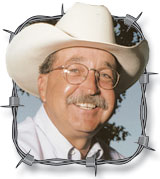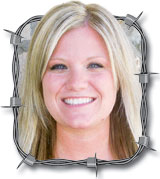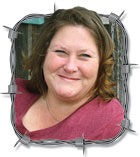Once upon a time, I had my cow herd split into a spring-calving bunch and a fall-calving bunch. Over the years, my growing frustration with the fall-calvers led me to evolve into an entirely spring-calving farm. Call me crazy, but I’d rather fight the problems associated with the cold (short ears, pulling calves on frigid nights, and the occasional snowstorm) than the problems that accompany fall calving (screwworm flies, short pasture, and the occasional stress of a heat wave).
I usually start calving the first week of February and, in most years, I am essentially finished by the middle of April. This year, however, it seems that my operation has evolved once more. By the end of April, I counted cows and calves, and checked my records to realize only 70 percent of my herd had given birth. I continued to have a few calves born throughout May, on into June, and now have had several born during the hottest and driest July since the 1950s. I would advise any farmer or rancher against starting a herd of summer-calvers.
In talking with friends and neighbors, I have found that many are experiencing a lot of late-calving cows, as well. I don’t know if it was the heat and dry conditions of last summer or the simple fact of my aging herd of cows and bulls, but it is what it is and treating navels before the flies get to the young babies is a constant battle.
Over the years, my very capable and trusted vet has come to realize that when he receives a call from me during calving season, I’m usually pleading with him to, “save the cow if you can.” I perform most of the routine pulls myself, but rely on him to take care of any abnormal births. One day last week, I discovered a cow in trouble. There was one foot and half a head exposed and they were crusty-dry and covered with flies. With the temperature approaching 100 at mid-day and the cow a good half-mile from the corral, I chose to call the good doctor.
“You’re having calves at this time of year?” he asked.
“Forget the scolding,” I chided, “Can you come over, or not?”
I think this was one day the large-animal expert would have rather stayed in his air-conditioned office and spayed a couple of cats, but he showed up within an hour to assist the desperate bovine. We calculated that driving the cow to the corral in the heat would most definitely eliminate the need to pull the calf, so he emergently darted her with a tranquilizer and started the procedure in the shade of a large tree beside the dry creek. I had to admire his dedication as he wrestled in the hot, powdery dust at the rear end of the cow, working feverishly to find and pull out the missing leg of the calf. After about 10 minutes of heavy work and absolutely covered in sweat and dirt, the doctor looked up at me and stated, “This is not the usual kind of weather I work in when I come to your place.” I had to agree.
In another five minutes, the vet had retrieved the hidden leg and proceeded to pull the calf by hand. I was amazed (and I’m pretty sure Doc was, as well) when the delivered calf started shaking its little head and breathing on its own. After administering the antidote to the tranquilizer, the cow responded by getting up and taking care of her calf.
As the veterinarian cleaned up, I complimented him on both his skills and promptness. We visited for a few minutes and then, as he started to drive away, he stopped the truck, rolled down the window and calmly stated, “Jerry, I don’t think you have to worry about frozen ears on this one.”
Jerry Crownover farms in Lawrence County. He is a former professor of Agriculture Education at Missouri State University, and is an author and professional speaker. To contact Jerry, go to ozarksfn.com and click on ‘Contact Us.’







